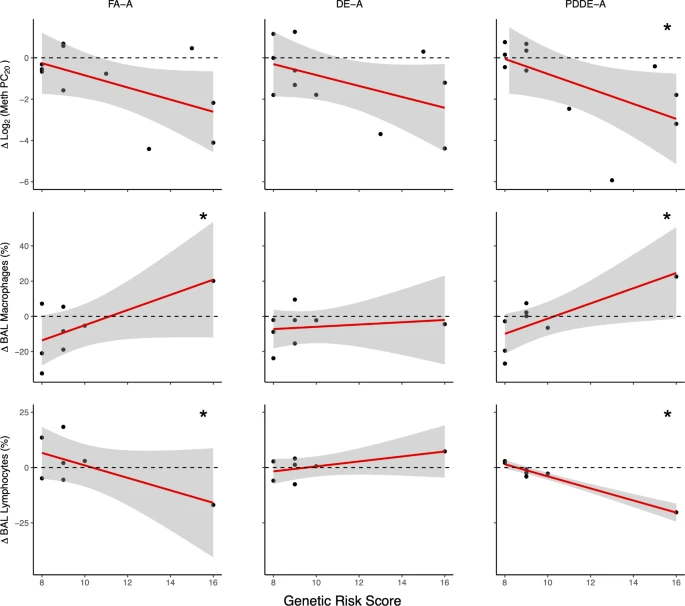Research – Open Access
Andrew Robinson, Ryan D. Huff, Min Hyung Ryu & Chris Carlsten

Respiratory Research volume 24, Article number: 218 (2023)
Abstract
Background
Environmental co-exposure to allergen and traffic-related air pollution is common globally and contributes to the exacerbation of respiratory diseases. Individual responses to environmental insults remain variable due to gene-environment interactions.
Objective
This study examined whether single nucleotide polymorphisms (SNPs) in lung cell surface receptor genes modifies lung function change and immune cell recruitment in allergen-sensitized individuals exposed to diesel exhaust (DE) and allergen.
Methods
In this randomized, double-blinded, four-arm, crossover study, 13 allergen-sensitized participants underwent allergen inhalation challenge following a 2-hour exposure to DE, particle-depleted diesel exhaust (PDDE) or filtered air (FA). Lung function tests and bronchoscopic sample collection were performed up to 48 h after exposures. Transient receptor potential channel (TRPA1 and TRPV1) and toll-like receptor (TLR2 and TLR4) risk alleles were used to construct an unweighted genetic risk score (GRS). Exposure-by-GRS interactions were tested using mixed-effects models.
Results

In participants with high GRS, allergen exposure was associated with an increase in airway hyperresponsiveness (AHR) when co-exposed to PDDE (p = 0.03) but not FA or DE. FA and PDDE also were associated with a relative increase in macrophages and decrease in lymphocytes in bronchoalveolar lavage.
Conclusions
TRPs and TLRs variants are associated with increased AHR and altered immune cellularity in allergen-exposed individuals. This effect is blunted by DE exposure, suggesting greater influence of unmeasured gene variants as primary meditators of a particulate-rich co-exposure.
